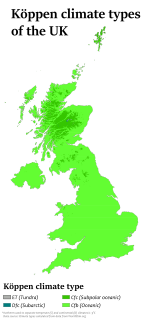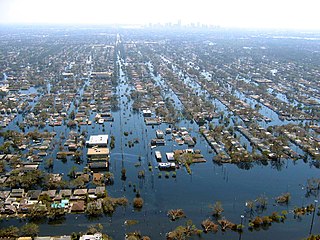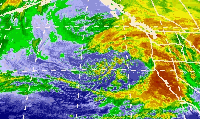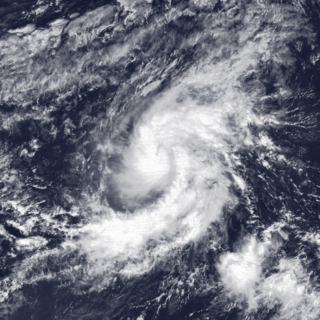Shrewsbury Abbey on November 1 | |
| Date | mid-September 2000— mid-December 2000 [1] |
|---|---|
| Location | United Kingdom, Italy, France, Switzerland, Spain, Netherlands, Ireland, Denmark, Norway, Slovenia |
| Deaths | 20 |
| Property damage | Estimated to exceed $2 billion [2] |
The Autumn of 2000 was the wettest recorded in the United Kingdom since records began in 1766. [3] [4] [5]
Contents
- Meteorological background
- Prelude
- Ex-Hurricane Isaac, 2–4 October
- Ex-Tropical Storm Leslie, 9–14 October
- Affected areas
- Kent
- Sussex
- Shropshire
- Worcestershire
- Yorkshire
- Aftermath
- Attributing flood risk to climate change
- Government report
- References
- External links
Several regions of Atlantic Europe from France to Norway received double their average rainfall and there were severe floods and landslides in the southern Alps. [6] In October and November 2000 a successive series of extratropical cyclones caused severe flooding across the UK. [7] [8]

Atlantic Europe is a geographical and anthropological term for the western portion of Europe which borders the Atlantic Ocean. The term may refer to the idea of Atlantic Europe as a cultural unit and/or as a biogeographical region.

Extratropical cyclones, sometimes called mid-latitude cyclones or wave cyclones, are low-pressure areas which, along with the anticyclones of high-pressure areas, drive the weather over much of the Earth. Extratropical cyclones are capable of producing anything from cloudiness and mild showers to heavy gales, thunderstorms, blizzards, and tornadoes. These types of cyclones are defined as large scale (synoptic) low pressure weather systems that occur in the middle latitudes of the Earth. In contrast with tropical cyclones, extratropical cyclones produce rapid changes in temperature and dew point along broad lines, called weather fronts, about the center of the cyclone.
The United Kingdom saw the most extensive nationwide [9] flooding event since the snow-melt of 1947. [4] Prior to 1947, three similar events occurred in the second half of the 19th century where prolonged rainfall led to widespread flooding throughout England in the month of November, namely 1894, 1875, and 1852. [3]
The combined effect of the storms across Western Europe caused flooding throughout the United Kingdom. Two storm events (Nicole and Oratia) 28 November to 3 November, and the storm Rebekka from 4 November, resulted in continuous flooding. [10] [11] 10,000 homes were flooded in 700 locations. [4] Peak flows on the Rivers Thames, Trent, Severn, Wharfe and Dee were the highest for 60 years. The River Ouse in Yorkshire reached the highest level since the 17th century. [4]

Cyclone Oratia, was an unusually deep European windstorm which affected Western Europe early in the year for a storm of this type. The storm was the fiercest to hit Britain in October since the Great Storm of 1987, with wind gusts reaching 109 mph, and gusting at up to 90 mph over much of the south of England. Its barometric pressure fell to 941 hPa, over the North Sea making it one of the deepest lows recorded in the country in October. The lowest land-based pressure observation reached 951.2 hPa at RAF Fylingdales, which is not lower than the UK record October value of 946.8 hPa observed at Cawdor Castle on 14 October 1981. Three tornadoes were reported from this storm. The storm contributed to the ongoing Autumn 2000 western Europe floods.
In the United Kingdom a series of severe floods affected large parts of the country in the Autumn of 2000. The worst affected areas were Kent and Sussex during October and Shropshire, Worcestershire and Yorkshire in November. The Autumn of 2000 was the wettest on record in the England and Wales precipitation record with several major rainfall events causing flooding in different parts of the country during October and November. England and Wales had an average of 503 mm of rain from September–November exceeding the previous record by nearly 50 mm. [12]

Kent is a county in South East England and one of the home counties. It borders Greater London to the north west, Surrey to the west and East Sussex to the south west. The county also shares borders with Essex along the estuary of the River Thames, and with the French department of Pas-de-Calais through the Channel Tunnel. The county town is Maidstone.
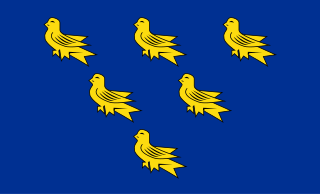
Sussex, from the Old English Sūþsēaxe, is a historic county in South East England corresponding roughly in area to the ancient Kingdom of Sussex. It is bounded to the west by Hampshire, north by Surrey, northeast by Kent, south by the English Channel, and divided for many purposes into the ceremonial counties of West Sussex and East Sussex. Brighton and Hove, though part of East Sussex, was made a unitary authority in 1997, and as such, is administered independently of the rest of East Sussex. Brighton and Hove was granted City status in 2000. Until then, Chichester was Sussex's only city.

Shropshire is a county in the West Midlands of England, bordering Wales to the west, Cheshire to the north, Staffordshire to the east, and Worcestershire and Herefordshire to the south. Shropshire Council was created in 2009, a unitary authority taking over from the previous county council and five district councils. The borough of Telford and Wrekin has been a separate unitary authority since 1998 but continues to be included in the ceremonial county.



